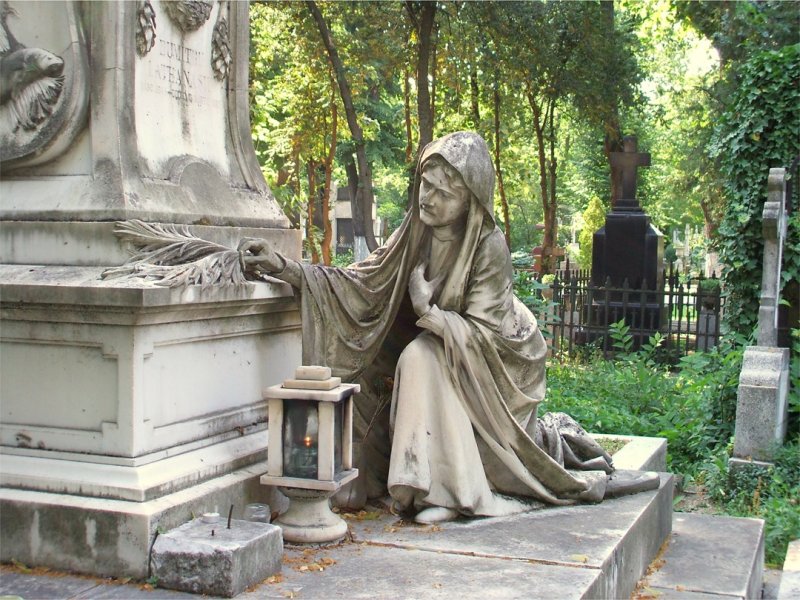Bucharest’s cemeteries – silent museums we avoid seeing

By Bucharest Team
- Articles
In a city that reinvents itself chaotically—where buildings disappear overnight and neighborhoods shift before we even understand them—Bucharest’s cemeteries are among the few places that remain. Not just intact, but alive in their own quiet way. They are spaces where memory breathes through stone, greenery, and forgotten names. And as unusual as it may sound, they are also some of the city’s most honest open-air museums.
Bellu – the monumental biography of a nation
You can’t talk about Bucharest’s cemeteries without starting with Bellu. This is more than a final resting place—it’s a visual timeline of modern Romanian history. From Mihai Eminescu to Corneliu Coposu, from I.L. Caragiale to Gheorghe Dinică, Bellu’s alleys form a map of Romania’s culture, politics, and arts.
The funerary monuments here go far beyond a commemorative function. They are works of art in themselves. Sculptors like Ion Jalea or Carol Storck turned stone into emotional testimonies—discreet, yet powerful. It’s no surprise that foreign tourists come to photograph mausoleums and bas-reliefs even if they don’t know who lies beneath. The beauty of this space speaks for itself.
The Armenian Cemetery – fragments of a quiet world
On Armenescă Street, hidden behind modest walls, lies a place of rare delicacy. The Armenian Cemetery doesn’t impress through size, but through detail. Tombstones inscribed in the Armenian alphabet, khachkar-style stone crosses, graves over a century old—all tell the story of a small but essential community in Bucharest’s past.
Here, time seems to slow down. You can walk alone between the rows, and yet feel a presence—the presence of memory that doesn’t make noise, but doesn’t vanish either.
Ghencea Civil – the quiet of those who changed the world
Ghencea Civil may be the most understated of Bucharest’s historical cemeteries. Less visited than Bellu, it still holds the graves of essential figures in anti-communist resistance, culture, and even Romanian sports. Between the aligned, discreet tombs lies a history that’s rarely taught in schools.
Few tourists come here. It isn’t advertised. But that absence of spectacle makes it all the more real. It’s not a museum-cemetery. It’s a real one.
Funerary monuments as a form of art
We don’t often think of cemeteries as cultural spaces, but they are—whether intentionally or not. Each era left its own aesthetic mark on tomb design—from baroque angels with human expressions to modernist monuments with clean, minimalist lines. Some graves say more through their silence than any written epitaph.
In a city where art is increasingly commercialized, funerary sculpture may be the last form of creation untouched by trends—devoted solely to memory. You can look, interpret, feel—no entrance fee, no audio guide, no time limit.
Cemeteries as places of reflection, not just grief
In many countries, walking through cemeteries is a normal act, even a cherished one—a way of understanding the city, its history, and the fragility of life. In Bucharest, we still hesitate. Perhaps out of superstition, or unease. Perhaps because we live fast, with little time to contemplate. But a quiet walk through Bellu or the Armenian Cemetery might tell you more about the soul of this city than any tourist brochure ever could.
You won’t find answers here—only clearer questions. What do we leave behind? What do we build that lasts? What does it mean to be forgotten? And maybe more importantly, what does it mean to be remembered with dignity?






























